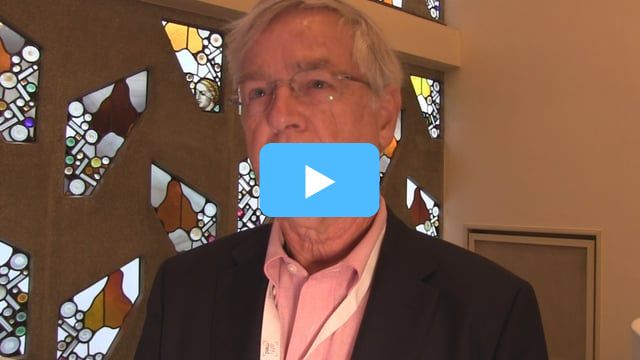Advertisment
Managing Hodgkin lymphoma – a world view (from ISHL 2016)

by Christine Clark
ISHL 2016
Professor Joseph Connors (Vancouver) speaks about the session at ISHL10 where a world view of the management of Hodgkin lymphoma was discussed.
There are wide variations in the incidence of Hodgkin lymphoma (HL) and in death rates – even within Europe. The reasons for the disparities include cost, long waits, lack of access to specialist physicians or the latest therapies. A recent global survey showed that only 33% of cases were diagnosed within four weeks of presentation. Globally, 16 frontline therapies are approved, 29 in the relapsed setting, but they are not always funded. For example, brentuximab vedotin (BV) is approved in 29 countries but only funded or reimbursed in 14. All in all, there is much room for improvement, said Andreas Engert (University Hospital of Cologne, Germany).
The British Columbia (BC) Cancer Agency provides cancer care to a population of 4.2 million. Variations in access arise because of distance, income, what patients already know about biology and medicine, and attitudes to treatment, explained Joseph Connors (Clinical Director, BC Cancer Agency Centre for Lymphoid Cancer, Vancouver, Canada) “Many people in BC refuse vaccination – imagine their reaction to chemo!”, he said.
HL is a rare cancer – most family practitioners will see one or two cases in their entire careers so it is not surprising that there are sometimes delays in referral.
The usual approach to treatment in BC is to use combined modality treatment, keeping the chemotherapy brief and irradiating only limited fields to minimise toxicity.
It is important to realise that the commonly-used scoring and staging systems were developed for use with the staging laparotomy. When this procedure was discontinued in British Columbia the staging system was also revised. Thus, many patients that European systems grade as ‘early unfavourable’ or ‘intermediate’ are graded as ‘advanced’ in Canada and the USA and consequently given bigger initial doses of chemotherapy. The treatment protocols have been progressively refined, based on trial results. In practice, patients with limited disease (stage IA, IIA with no bulk or B symptoms) are treated either with two cycles of ABVD followed by involved field radiotherapy (IFRT) or two-three cycles of ABVD after which PET-negative patients receive IFRT and PET-positive patients receive one or two more cycles of ABVD. For patients with advanced disease (Stage III or IV, B symptoms or bulky disease) more intensive treatment with six cycles of either ABVD or BEACOPP is given. PET scanning is used after chemotherapy to determine which patients should have consolidating radiotherapy (RT).
An audience poll showed that the majority use grading systems that include an ‘early unfavourable’ group and use almost exclusively ABVD as treatment for limited-stage disease.
During the discussion, it was noted that in many parts of the world there is often limited access to diagnostic facilities and the diagnostic skills may be lacking – the result is long delays before diagnosis and treatment. In the early days in Germany, many viral infections were misdiagnosed as HL and treated unnecessarily. In China one patient was diagnosed with HL and treated with ABVD for six months before the real diagnosis turned out to be adult Still’s disease.
In many countries, it is difficult to obtain a PET-CT scan and Deauville score (DS) but without interim PET-CT scanning up to 80% of patients may receive intensified treatment unnecessarily, according to Astrid Pavlovsky (Medical Director, Pavlovsky Centre for Haematology Buenos Aires, Argentina).
Interim PET after initial chemotherapy is the most powerful predictor of treatment outcome. It can be used to guide therapy but the threshold for RT is important. The results of the CALGB/Alliance 50604 trial1 showed that if the criterion for PET negativity was a DS of 1-3 then 91% of patients would avoid RT whereas a DS of 1-2 would result in 75% of patients avoiding RT, explained Professor Pavlovsky. The corresponding 3-year progression-free survival (PFS) values were 92% and 95%.
Summarising other trial results she noted that:
Radiotherapy can safely be avoided in PET-CT negative patients after BEACOPP/ABVD and this should reduce long-term toxicity; bulky disease is not an exception.2
In patients who are PET-negative after two cycles of ABVD, bleomycin can be omitted without detriment.3
Intensifying therapy(BEACOPP/ASCT/RT) after ABVD in PET-positive patients may achieve a better event-free survival3.
Dr Connors noted that in the HD6 trial4 there was no PET, patients were assessed with CT alone and the results were good. In the HD155 trial half of patients had no mass and did not need a scan. These results suggest there is room for rational planning if resources are limited, he suggested. Moreover, radiotherapy is a limited resource that should not be used if not essential. “It might be needed elsewhere, for example, to treat cervical cancer”, he added.
Another point was that HL does not progress very quickly so observation can be a reasonable strategy and a simple chest X-ray can sometimes show if a mass is growing.
References
- Straus DJ et al. US Intergroup Trial of Response-Adapted Chemotherapy or Chemotherapy/Radiation Therapy Based on PET for Non-Bulky Stage I and II Hodgkin Lymphoma (HL) (CALGB/Alliance 50604) ASH 2015 Abstract 578
- Savage KJ et al. Advanced Stage Classical Hodgkin Lymphoma Patients with a Negative PET-Scan Following Treatment with ABVD Have Excellent Outcomes without the Need for Consolidative Radiotherapy Regardless of Disease Bulk at Presentation. Blood 2015; 126: 579
- Johnson PW et al ICML 2015 abs 008
- Meyer RM et al. ABVD Alone versus Radiation-Based Therapy in Limited-Stage Hodgkin’s Lymphoma (HD6). NEJM 2012; 366:399-408
- Engert A et al. Reduced-intensity chemotherapy and PET-guided radiotherapy in patients with advanced stage Hodgkin’s lymphoma (HD15 trial): a randomised, open-label, phase 3 non-inferiority trial. Lancet 2012;379:1791-1799.





